| The new King-of-the-Hill When sound quality, signal routing, reliability, versatility, build quality and portability are what’s important, the new mixer from Sonosax – the SX-ST – is now King-Of-The-Hill. While it’s also the most expensive (what would you expect from The King?), for those who can’t afford anything less there’s plenty to justify the price. At risk of drawing attention away from many other unique and useful features, I shouldn’t finish this paragraph without stating that the SX-ST has 8 mix busses. Many will ask, “When would I ever use 8 mix busses?” Answer: On the very next production you do that uses 7 microphones and a multitrack recorder. If, that is, and only if, you have the Sonosax SX-ST mixer. Those who do will be smiling.
Sonosax earned its respectable name in portable mixers for TV and Film production around 20 years ago with the SX-S8. This stereo forerunner is still highly regarded for its sonic quality and compact design, and many are still in use. In fact, appropriately enough, while writing this article I am using an SX-S8 owned by West coast mixer Walter Anderson while filling in for him for a couple of weeks on the movie “Hoot”. Using the SX-S8 on this show is a good reminder of famous features that were carried directly into the new SX-ST (the limiters and EQ, for example, are largely unchanged). But it also served as a gauge, confirming for me that the new Sonosax SX-ST is much better than even the best of the past. A little discussion about analog mixers vs digital mixers Which is best? It all depends on the priority. Generally, the benefits of a digital mixer are in more versatile signal routing and the ability to use a microprocessor to change the function of buttons and knobs. For example, the EQ knob of a digital mixer could be reprogrammed to be a pan pot. Conversely, the controls of an analog mixer will always be what they will always be. For location recording of original live tracks, the primary problems of a digital mixer are stability and high power consumption. A mixer that is controlled by a computer, will eventually crash and have to be “rebooted”. Since an analog mixer does not have a computer, it cannot crash, so generally speaking analog mixers have a track record of being much more reliable than digital mixers. The Sonosax SX-ST offers the best combination both worlds. As you’ll read later on, the routing features are extremely capable for an analog mixer and approach those normally found only in digital mixers. In a single (but rather long) sentence: The SX-ST can route any combination of inputs – prefader or postfader, pre or post EQ and/or low cut, with or without stereo positioning – to any combination of outputs, and the returns can be routed back into the mix busses. Now that’s versatile routing. And that’s just the beginning. The SX-ST is an analog mixer that also uses programmed logic circuits to determine the function of many of the controls. Therefore it is much more stable and uses much less power but many controls have the ability to “evolve” when changes are determined to be beneficial. For example, after first evaluating the SX-ST, I recommended to Sonosax that some of the talkback and communication functions be altered for improved boom operator to mixer use. The changes were made by reprogramming an EPROM chip without any wiring or circuit board modifications. Trew Audio can custom program the SX-ST to modify a variety of functions. |
||||
| The Sonosax SX-ST is unsurpassed in both sound quality and build quality. |
Sound Quality
Transformers have their place when isolation or minimizing of line noise is the goal, but even the best ones “color” – i.e. distort – the original signal. Some embrace this distortion as being “warm” or “musical” or [insert art term here]. But when the goal is the most accurate reproduction of the original microphone signal – which logically, should be the goal when recording original voice tracks – a properly designed transformerless circuit wins. This is the reasoning behind the Sonosax philosophy of their transformerless mic pres. Critical listeners and former owners of other mixer brands who are now using the Sonosax SX-ST have mentioned an “increased clarity” with the SX-ST and say they don’t feel the need to reach for the EQ as much as they had in the past. Splitting imaginary hairs? Wishful thinking? Possibly. But these are comments from different people with decades of experience who know the difference.
Dialog mixers need massive amounts of low noise gain and headroom, and the SX-ST delivers at least enough gain to handle quietest scenes using a distant mic. And with input noise less that 130dB, you can use that much gain even with the best 24 bit 96K digital recorders.


Build Quality
True to their Swiss heritage, Sonosax has always been known for their high level of craftsmanship, but the SX-ST mixer raises even Sonosax’s high standard. But it’s not just on the surface. The exterior of the SX-ST gives a truthful indication of the inside as well.
A quick look and feel of the SX-ST will tell you its well made. But there are a few things you probably wouldn’t notice but are done high-end anyway. For example, while the industry standard is to use fairly high quality Neutrik XLR connectors, Sonosax went the extra mile for ones made by Hirose. They are more expensive, but they are also more rugged and reliable. For most high-end mixer, highly regarded P&G faders would be good enough, but Sonosax went with even better, more expensive ones that should be more reliable and have a longer life – they definitely feel better (more on these faders later in the article). Time is taken to individually test and select capacitors and other semiconductors before assembly; an expensive but quality conscious practice that may have its roots from the neighboring Nagra factory (a mere five minutes away), where Jacque Sax worked during the early years of his career.
The trend continues throughout the mixer with every wire, every screw, the meters, the finish, printing, etc. Even the panel machining is done in-house with their own CNC router, often operated by Jacque Sax himself.
The good stuff stays.
Many things about the older SX-S8 mixer proved over time to be great features. So, thankfully, many of these features remain, giving the new SX-ST mixer an strong resemblance to its predecessor. Therefore, the SX-ST is quite thin (less than 3 inches) and the integral 12 D-cell battery compartment that is also the front edge of the mixer are nearly identical to the original. The SX-ST still uses precision machined removable aluminum modules (anodized black), and the front and rear top surfaces are just a bit higher than the rest of the mixer, allowing it to be lain flat on its top without harming any knobs, switches, or faders.
Ask any Sonosax user what the favorite features are of their beloved S8 and they will always include it’s input limiters. The limiters are a “soft-knee” type and can be used extensively without offensive pumping artifacts. They can actually be used more like compressors, doing a much smoother job of riding gain than the human hand when quick, sporadic level control is needed; especially when multiple microphones are involved.
Though the SX-ST can be ordered with as few as one input and with a frame capable of 10 or more inputs, a typical configuration would be with 8 mic/line inputs, plus a blank panel (more on options for this blank panel later). Other standard circuits include 8 mix buss outputs, 4 auxiliary outputs (pre or post), direct outputs (pre or post), 3 communication channels, and the most comprehensive boom op talkback system ever seen in portable mixer.
Input level headroom of the older SX-S8 was sometimes not enough for the surprise peaks of live dialog. So when designing the new SX-ST Sonosax responded to this issue by building in more than 24dB of headroom. While this may seem excessive, and technical types may argue that it adds needless amplifier noise (the logical result), the wide dynamic range now commonly available with 24bit recorders can certainly warrant this much headroom, and the Sonosax circuitry is so quiet that the noise level remains as good or better than the best in the industry. This means that you can set the input trim for a safe level when planning for a 0VU reference of -20dBdBfs (20dB below digital max) and still not have mic pre overload when the level requires working the fader 20dB below the 0 hash mark. This is a lot of semi-technical hooie that basically means the SX-ST is very forgiving with signals and settings that would send other mixers into clipping.
To help manage all of this headroom and gain to maximum benefit, and to reduce the chance of overload distortion, each input module has two 5-LED input meters located next to its fader. One meter shows prefader level and another shows postfader level. If you have input overload with this mixer, it’s no longer because you couldn’t have seen it coming.
A first for analog mixers: Prefader Direct assignments to mix busses
The SX-ST is the only mixer of its class that has the very special ability to route any or all of its inputs prefader to any or all of its mix busses. This is huge. It’s an important benefit because it allows signal routing and grouping to be changed very quickly without the need to re-patch cables from the mixer to the recorder. I’ll explain…
The vast majority of productions using nonlinear recorders are adapting the standard of recording a mono mix to TRACK 1 and then prefader direct isolation tracks to as many remaining tracks as needed. With all other mixers currently being made (this qualification made primarily for the benefit of the discontinued Cameo digital mixer) this is done by assigning all inputs, postfader, to a single mix buss (usually the LEFT or Channel 1 mix buss) feeding track 1 of the recorder, and then patching prefader direct outputs of each microphone to their own separate recording tracks.
This is OK, but what happens when you want to move an actor to a different track? Or what happens when you need to combine prefader direct outputs because of a limited number of tracks? Or what about when an actor appears on a different input of the mixer and you want them to go to the same track they’ve been on? Answer: You have to get out of your chair and unplug and re-plug either the direct output cables to the mixer or the input cables to the recorder. Not only is this inconvenient, but with the time constraints in the frantic pace of production it is often an impossibility. And even when it is possible, and even if your mixer has 4 or more mix busses, you can still only use one of the mix busses for the recorder if you are going to follow the “mix on 1, prefader iso on everything else” standard. In other words, you would be using a rather expensive mixer for what a much cheaper mono mixer could do.
But prefader assignments is an area where the Sonosax SX-ST really rises above all others and starts to pay its way. With the SX-ST you can assign any input, post fader or prefader to any mix bus, so only the mix busses need to be connected to the recorder’s inputs. No other portable analog mixer suitable for Film/TV production has this ability. In the above scenario, if you want to move an actor’s prefader isolation track from TRACK 2 to TRACK 6, you simply remove the input’s assignment from track 2 and assign the input – prefader – to track 6, all from the comfort of your chair in less than a second. No patching required! When changes happen at the last minute and no one is going to wait for sound, this ability is a huge stress reliever and allows you to do things you would not otherwise be able to do. This unique feature, even by itself, puts the Sonosax SX-ST squarely in the lead, but there’s more…
Dialog recording for dramatic production is particularly challenging, not only because of the wide dynamic range (the difference of the words and between the words), but mainly because of the difference in level of the words themselves. No where else are you expected on a daily basis to cleanly record a whisper followed by a scream when not knowing what the level of either will be. This has lead to the dastardly habit of two-handed mixing (one hand on the fader and the other hand on the input trim pot) or even worse: mixing just with the tiny input trim pot. With another very unique feature, Sonosax has come up with an answer:
Two scales for each fader. What is this?
Close observation of the input module will reveal two different scales printed on either side of the fader. One side has the “0” where you’d expect it – about ¾ up – with another 12dB to the top. But the other side has the “0” about halfway down the fader with 24dB to the top. What the hey?
Look again and notice a small two-position toggle switch to the left of the fader. One position is printed “12”, and the other, “24”. The “12” is considered the normal mode, but when switched to the “24” position the 24dB scale applies and there is an additional 12dB of gain available with the fader (a full 24dB above the “O” mark). In appropriate scenes, this allows you to set the input trim for the loudest yelling expected and still have plenty reach for the most delicate whispers – using only the fader – without having to touch the input trim when recording.
When I first saw this “+24dB” feature I had to wonder just how useful it would be in the real world. My first day on a commercial set with this mixer gave me the answer: The shot was a wide and high lock-off (the mic could only go so low and the ceiling prevented the mic from going any higher) of a couple lying in bed. The first lines were very soft while lying down. Then the couple would sit up suddenly and delivered much louder lines (closer to the mic), then lie back down and talk softly. Because of the yells at close proximity to the mic, I switched in the -10dB pad on the Sennheiser MKH-50, requiring even more gain for the whispers. Using the 24dB setting on the SX-ST I was able to record all of the lines at full scale, using only the fader and limiter to ride gain, all without input overload distortion or excessive noise. No other mixer I know of would have been able to do this. Now that Trew Audio has several SX-ST customers, reports from the field indicate that I’m not the only one who appreciates this unique feature.
Visual inspection of all circuit boards happens here.
Unique capability for new production demands
Production sound mixing is more complex and technically demanding today than in the recent past, and the added expectations often surpass the ability of equipment that was once the highest standard. So while the SX-ST may seem like over-kill for productions a few years ago, it is well within reason for many current productions and for what will only be the increasing demands of future productions.
The additional tracks now available with nonlinear recorders give production sound mixers more flexibility than ever before. The argument that multitracking makes us more of a “tracker” than a “mixer” is just not valid. In my opinion the additional tracks actually give us the freedom to mix with artistic reckless abandon. How? When each microphone is recorded separately in such a way that allows post production the ability to remix the take as if they were on the set with the actors, you can then mix your mono track exactly the way you think it should be – and when you do it without fear, you will usually do it better. The prefader direct to mix buss ability of the SX-ST allows multitracking options to be selected quickly, and therefore used more often.
Communication
Communication on the set is becoming more important – communication to the Director, Script Supervisor, and, of course, communication to and from the boom operator(s). The SX-ST has the most comprehensive and useful internal communications system of any other portable mixer available.
There are three separate talkback circuits. Typically #1 is used for the Recordist for slating and on-line global communication. The other two are labeled PL1 and PL2, typically used for off-line private communication. They can be used either as separate com lines to two boom operators or, probably more usefully, as one for the boom operator(s) and the other for Director or Script.
PL 1 and PL2 also have the ability to be remotely activated from a PTT (push-to-talk) switch from the boom operator(s). For example, if the Mixer wants to talk to the boom operator he would press a PL button and start talking (the boom op would hear privately). If the boom operator(s) wanted to talk, they would press their own PTT button. When neither person was pressing a PTT button, the circuit would be closed so that no talkback circuit noise would be present on the monitoring circuit.
Each of the three balanced talkback/slate mic inputs can be configured for dynamic mics, electret condenser mics (6V), or true condenser mics (48V phantom). With all of this attention to versatility and detail, it does, however, seem a bit of an oversight that there is not built-in slate mic, requiring that an external slate/talkback mic be used at all times. While most built-in slate mics are nearly useless anyway, in a pinch they can be better than nothing. That’s why Remote Audio built an optional miniature gooseneck mic for slating and communication (as shown in photograph). The electret mic plugs directly into the back of the SX-ST (powered by the mixer with 6V) and allows the use of normal headphones without talkback mics. As it turns out, this is quite an improvement over a traditional talkback mic usually built into mixing consoles because it is not buried under the mixing panel and it can be positioned closer to the mouth.
A mixer of this one’s abilities should look professional with understated functional but elegant styling – which the SX-ST certainly does with hefty gauge aluminum anodized with a nice low-luster black with light gray screen print – but the operation needs to feel smooth and solid, too. After giving the board a quick visual scan, every tire kicker will reach for the faders to check out how they feel. They will find that these are, without a doubt, the smoothest, lowest friction faders they have ever felt. As good as P&G faders? Believe it or not, better. One reason for this is that the slider control rides on two polished chrome rails instead of the single rail used in P&G faders. This twin rail system will keep the guides from wearing unevenly, which is what usually happens to cause P&G faders to lose that nice “new fader feel” after a short time.
Master Module
8 mix busses, 4 AUX masters, 8 recorder returns, tone and slate mic assignable each mix bus and/or AUX circuit, PFL, AFL, and off-mix SOLO functions of each input and output circuit; and this is just the beginning.
Adding such an enormous amount of features and capability to a mixer not much larger than its predecessor required some clever choices to be made. One very good choice was to replace the two vertical master faders with eight small rotary knobs. This choice saves panel space and also helps keep the price from going even higher than it is (eight vertical conductive plastic faders could easily add several hundred dollars). In my opinion, this is not a compromise and should have even been in the older SX-S8 design. Let’s face it, master faders should NEVER be needed for recording dialog, and usually spend their entire life in the full up position anyway. Personally, I’d rather not spend an extra thousand dollars for eight faders that should never move.
In addition to the LED bar meters for every output including mix busses and AUX sends, there are two real, moving needle, analog meters. These meters can be used to display levels of any of the outputs with either PPM or VU ballistics, and when in the MONO mode, the top meter shows the summed level while the lower one shows phase relation between the mix busses being monitored.
AES Outputs option: The SX-ST8D
An optional eight additional mix buss outputs are available with high-quality 24 bit A-D converters. These outputs can be selected to duplicate the mix busses or may be prefader or postfader direct sends from each input. If the Sonosax is ordered with this option, the designation becomes SX-ST8D.
Finally: A mixer with a built-in nonlinear recorder (optional).
This may be inevitable for all mixers, but the SX-ST is the first. With nonlinear recorders getting about as small as the hard drive they record to, it was only a matter of time before a real analog mixer had one built in. The Sonosax SX-ST8D (with digital option) can also be ordered with the optional 8-track recorder. The Broadcast Wave Files are recorded to an internal 40G 1.8 inch hard drive, and are made available to the rest of the world via its USB port or built-in Compact Flash card writer. Use it as your primary recorder and burn the files to a DVD for delivery to post, or just keep them on the hard drive for archive/backup. Sweet.
Basic controls of the recorder (REC, STOP, PLAY) are buttons on the mixer panel. More complex setup options such as timecode, number of tracks, etc, are done on the screen of a small wired remote control.
North American Version
Those already familiar with the SX-ST – especially those who have purchased them outside of North America – may note some of the details mentioned above are not quite as you recall. That is because Trew Audio felt that certain features of the original design of the SX-ST could be altered to better suite the typical methods of North American sound crews. Therefore, we worked with Sonosax to come up with the following features that are, at this point, unique to SX-ST mixers imported into North America:
- Prefader direct assignment to mix busses.
- When the assignment switch is in the position “away from the line”, the signal bypasses the pan pot and fader, and is routed directly to the mix buss. (Euro standard is this position only bypasses the pan pot, but is always post fader to the mixer buss).
- Back Panel XLRs
- Mix 1, 2, 3, & 4 out
- Aux Out 1 & 2 (Euro version includes Aux 3 & 4 also)
- Return inputs 1 & 2 on female XLRs to accommodate 2 channels of return without the need for a 25pin harness (not standard on Euro version)
- Com and PLL
- Master modules programmed for full remote activation by boom operators
- Boom operators activate full duplex circuit and call-light when pressing a PTT (push-to-talk) button on their belt-worn box This allow the boom op to talk at will instead of waiting for the mixer to activate their circuit. (Euro default is to only activate the red light as not to disturb the mixer)
- No monitor attenuation during talkback This allows the boom operator to know that their voice has enough volume for the mixer to hear them over the program level.
- Side tone is set so that each person (mixer, boom 1, boom 2) hears their own voice at approximately the same level that the listener does.
- Mic gain is set for reduced limiter activation and so that a talkback mic close to the mouth requires a setting of approximately 12:00.
- Slate and Mixer’s Talkback: No muting or ducking of the program monitor during slating.
- No monitor muting during slating (the mixing engineer should be able to hear the actual level of their voice as it appears on the mix buss they are monitoring.
- Input trim pot detent: No Detent for US standard (Euro standard has a center detent).
- Low cut filter: Pre EQ, prefader (always on regardless of EQ)
- AFL: Post Pan (Current Euro standard is PRE PAN)
- Input module ON switch activation: Instant (Euro version has 125ms or 250ms delay)
- Power up option: All input modules turn ON at power up (Euro default is OFF).
Any of all of the above features can be modified by Trew Audio’s service department at the customer’s request.
Summary
To sum it all up: The SX-ST has all the features found on all other mixers in its category and has very useful and unique abilities that are not found anywhere else, while arguably sounding the best in the industry. Mega gain and headroom, transformerless clarity, limiters that are really useful for what we do, prefader assignments to 8 mix busses, 8-channel return monitoring, playback assignment to mix busses, two discrete communications circuits, and more stuff too sophisticated to summarize briefly (you’ll just have to read the entire article again).
That’s what makes the SX-ST the new King of the Hill.
-Glen Trew


 US
US  Canada
Canada 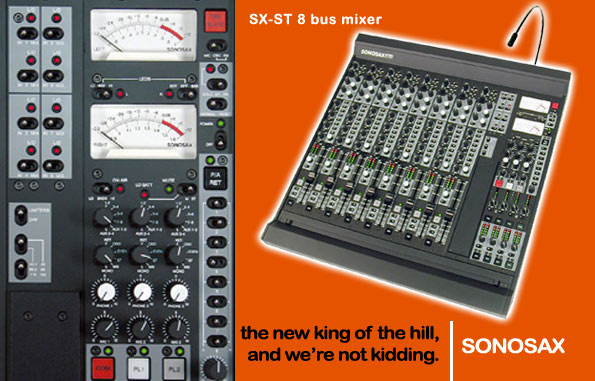
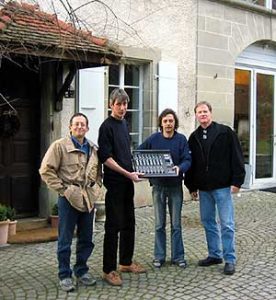
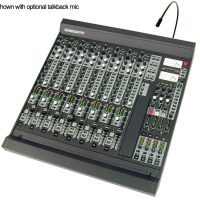
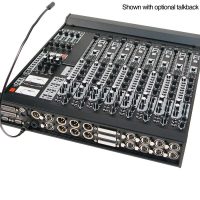
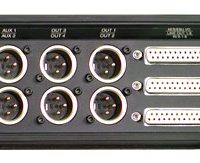
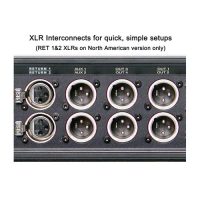
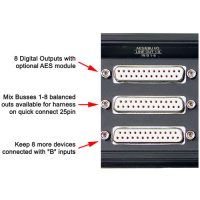
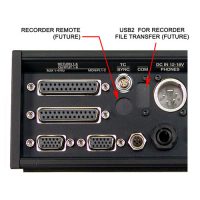
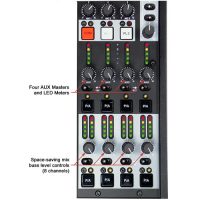
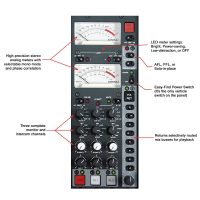
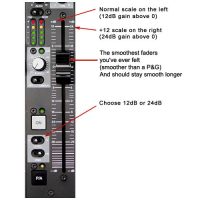
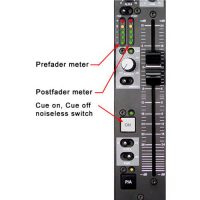
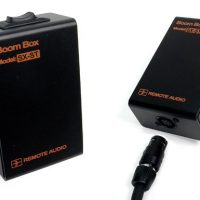

Leave a reply
You must be logged in to post a comment.